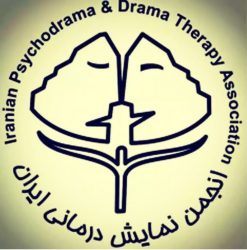 "Drama Therapy" "Drama Therapy" is one of the non-medical therapies used in the world to address the psychological and psychological problems of individuals. "Drama Therapy" is a branch of art therapy. "Drama therapy" or "drama therapy" is the use of the dramatic and aesthetic aspects of the art of acting to influence the personality of a person, which is, rather than being an individual activity, a group activity based on the essence of the play. " In the search for cyberspace, we will find out the definition of the concept of therapeutic representation.
"Drama Therapy" "Drama Therapy" is one of the non-medical therapies used in the world to address the psychological and psychological problems of individuals. "Drama Therapy" is a branch of art therapy. "Drama therapy" or "drama therapy" is the use of the dramatic and aesthetic aspects of the art of acting to influence the personality of a person, which is, rather than being an individual activity, a group activity based on the essence of the play. " In the search for cyberspace, we will find out the definition of the concept of therapeutic representation. In Iran, people from different social classes do not have a clear understanding of "drama therapy", but they are more familiar with arts in this area.
In our society, there is less recognition that "drama therapies" can be used as one of the non-prescriptive therapies for people's mental and emotional issues; a way that has a great impact and solves many personal problems, as well as better communication. And more often leads to family, community, and peripheral people.
"Drama Therapy" can be effective in preventing many personal and social abnormalities and can help repair the mental and emotional trauma of individuals. In Iran, this treatment has been carried out for several years by a number of experts and "drama therapies" on mental health patients and those who are struggling with some non-physical problems.
Dr. Majid Amraei is a drama theater, a professor at the University of Cultural Heritage, Allameh Tabatabai, and a comprehensive university that has been working on "drama therapy since 1997".
He has been practicing psychotherapy for many years, and has trained four "books" in the field of "drama therapies" and has presented articles on this "drama therapy" at international gatherings.
Concerning the meaning of "drama therapy," explains: If we want to give a definition of "drama therapies", we should consider four main attributes: whether therapeutic is auxiliary, non-drug, group, and game-centered. When we include these four indicators in this definition, the therapeutic distance between the aesthetic and formal theater and its form of treatment are revealed.
This writer and theater director adds: "In principle, in the" drama therapies ", there are patrons who have problems, that is, those who have a problem and who intend to fix it through" drama therapy ".
These issues are categorized into three categories of problem in the perceptual field, the problem in the area of behavior, and the problem in the emotional domain, which are either problematic in either three domains, or in two domains or areas.
"Member of the World Drug Therapy Union" continues to learn about how to get information about the issues and problems of people who are referring to it: information is transmitted to the screen in three ways: first, self-referencing refers to, for example, references that self-confidence is low.
The second is information provided by supervisors or parents, such as information provided by supervisors of Down Syndrome Patients Centers or their parents.
The third way to receive information, which is the most important and most important area in receiving customer information, is directly from the references at the drama therapy workshop, on the playing field and the action.
For example, when a therapist shows with references at the workshop, he finds that references are in addition to stress and depression, fear, and psychological problems.
"The drama therapy is in fact a non-medical adjunct therapy," he said, emphasizing that the therapy show is essentially teamwork.
A group that addresses the issues of the individual and the people who are in the shortest possible circle is a combination of the therapist's show and references, but other circles are also added to this group.
For example, when I was active in Sa'adat Abad's mental and psychiatric hospital because there were schizophrenic and PTSD patients, ie people with post-traumatic consequences such as a wave of an explosion, an accident, an earthquake, a flood, seeing corpses and losing loved ones, a team Our treatment consisted of a psychiatrist, psychologist, social worker, therapist and therapist. The treatment team adds or decreases depending on the level and side effect ............ (Continued)

